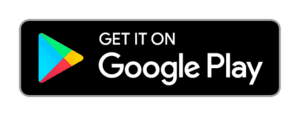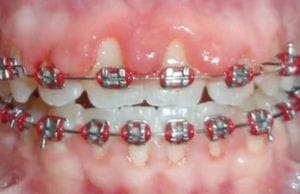The use of a phone app improves oral hygiene in orthodontic patients?
Every now and then a team of investigators does a simple study that may result in a clinically useful finding. This blog post is about one of these studies.
We all have patients who have difficulty cleaning their teeth. Over the years I have tried every approach to help them. These have ranged from intensive OHI, gentle encouragement to downright aggression. All my attempts have been met with varying levels of success. I have searched for solutions and wondered about various types of reminders to reinforce OHI. This team of investigators developed and tested a mobile phone app which reminded their patients to brush their teeth. A team based in Riyadh did the study and the Journal of Orthodontics published their paper.
Omar H. Alkadhi et al
Journal of Orthodontics, DOI: 10.1080/14653125.2017.1346746
What did they do?
They did a single blinded RCT in two clinics. The PICO was;
Participants: Orthodontic patients older than 12 years old
Intervention: Mobile phone app. This included OHI in the form of videos and active reminders via push notifications three times a day.
Comparison: OHI given during routine visits (Treatment as usual).
Outcome: Plaque and Gingival Indices measured at the start of the study and 4 weeks later.
They carried out a power calculation, but I could not understand the effect size that they used.
Sequence generation was done on a remote computer. They concealed the allocation in envelopes. The examiners, data collectors and analysers were blinded to the treatment allocation.
What did they find?
They randomly allocated 44 participants to each group. All the participants completed the study.
Their data analysis showed that the use of the app resulted in a reduction in both of the oral hygiene indices.
I have extracted some of the relevant data and put it in this table.
| Study | Eruption after extraction (%) | Eruption after non-extraction (%) | Risk Ratio (95% CI) |
|---|---|---|---|
| Naoumova | 69 | 39 | 1.6 (0.9-2.7) |
| Bazargani | 67 | 42 | 1.7 (1.1-2.7) |
What did I think?
I thought that this was a simple study that may provide us with clinically useful information.
I have mentioned before that all studies have limitations. We need to identify these and then decide if these issues are so great that the study findings will not influence our practice. When I looked at this paper very closely and I spotted several issues. The first was the duration of the study was only four weeks. I would have liked to see the data collected over a longer period. We are all aware of patients who respond to OHI and then deteriorate over the next few months.
I was also a little confused over the timing of the intervention. On first reading, I thought that they gave interventions at the start of treatment. However, after I had read it several times I decided that they did this at any point in the course of treatment. This should not be a problem if the randomisation worked, as equal numbers of patients at different point of care would have been enrolled. But the authors did not give this information.
My last concern is with my interpretation of the effect size. This was rather small and I do not really know whether the difference they detected was clinically significant. The authors did not mention this in the paper.
Are the findings useful?
Do these issues make the study less useful? I cannot help feeling that this is the case. Nevertheless, we also need to consider if the intervention is costly or can cause harm to our patients. In this instance, it is a low risk intervention, but these issues may influence the findings. As a result, I would be interested in investigating this further before introducing this into my clinical practice.
Finally, it would be very useful if the authors could give details of their app. Other investigators and clinicians could use it.
While I am writing about free apps…my blog has an app. I think that it is great, here are the links if you want to download it…
 The effect of using mobile applications for improving oral hygiene in patients with orthodontic fixed appliances: a randomised controlled trial
The effect of using mobile applications for improving oral hygiene in patients with orthodontic fixed appliances: a randomised controlled trial
Orthodontist should use the possibility to ask patients to monitor their orthodontic treatment. Self monitoring of your own health is the future.
We live in an increasingly visual world with children’ lives dominated by phones, tablets and apps. If this is the way to connect with them and, as Kevin said, it is low risk, then there is nothing to lose. I know that Oral B has an interactive toothbrush and App that is quite a lot of fun. I have tried it with a few patients and they all took to it with enthusiasm. However, with most things like this, unless we institute some form of follow up it tends to be the usual flash in the pan. Nothing beats the old-fashioned bribery…………
Dear Kevin
We have had success with asking parents to send me a photo of their child’s teeth a few days later when OH has been suboptimal. Interesting different styles of retraction however usually one can see anteriorly quite well. It puts a bit of pressure on both parents and kids to follow through. If they do not respond it can be noted in the records. Also great for positive feedback as they get a reply from “the orthodontist”. So far, a really good response, without the need for another app. Not sure about the longer term follow up yet ( “flash in the pan” as mentioned by Roger Price, above). Hope this helps.
Our orthodontist over at Varallo Orthodontics, suggested a mobile app for my son to keep on top of his oral hygiene care during his orthodontic treatment and boy has it helped! My sons teeth have never looked better, cannot wait to see his smile after the braces are off.